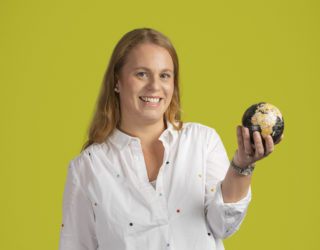In 2011, Mark Browne, a well-respected scientist, published data showing that tiny man-made fibres from clothing could be the biggest source of plastic in our oceans. He found these fibres in the greatest concentrations near sewage outflows (Browne et al. 2011).
Experiments sampling wastewater from washing machines found that more than 1,900 individual fibres can be rinsed off a single synthetic garment. These particles eventually end up in the oceans, making up 85% of man-made debris on shorelines around the world.
The effects of microbeads from cosmetic products are well documented.; The US government has banned them, requiring companies to phase out microbeads from their products between 2017 and 2019. However, plastic microfibers have not received the same attention.
Ironically some companies use recycled plastic bottles as a way to conserve and reduce waste, breaking bottles down into fibres to make jackets. This research indicates that this plastic ends up in the oceans anyway, and arguably in a form that’s even more likely to cause problems.
These fibres are not only polluting our seas and oceans, but lakes and rivers as well. Studies in America have shown that microfibers are the most common type of debris in rivers. 71% of man-made debris found in tributaries leading to the Great Lakes were plastic microfibers, far exceeding fragments and pellets.
Plastics can absorb persistent organic pollutants such as polychlorinated biphenyls (PCBs). When the plastic is broken down in animals’ stomachs, these pollutants can be released and become concentrated in the animals’ tissues. It has also been proven that ingesting microplastics can affect a perch’s ability to detect predators (Lonnstedt & Eklov, 2016), and has caused stunted growth in crabs (Watts et al. 2015).
The chemicals that accumulate in animal tissue have the potential to move up the food chain. A study into seafood from California and Indonesia indicates that plastic contaminates the food we eat. In Indonesia 55% of all species were found to be contaminated and in California 67% of all species were contaminated. 33% of individual shellfish were found to contain anthropogenic plastic. This raises concerns for human health.
So what can we do to prevent plastic microfibers from entering the aquatic environment? Clothing manufacturers could phase out use of man-made fibres in preference for natural fibres, use better quality materials or use anti-shed treatments on clothing and fabrics. Washing machine manufacturers could install filters which capture these tiny particles. Apparently waterless washing machines are being developed which use pressurized carbon dioxide to ‘wash’ clothes. And/or we could all start putting nanoballs in with our washing to attract and capture plastic fibres.
One thing’s for certain, with evidence of microfibers entering the human food chain, plastics are definitely everyone’s problem.
Browne, M.A., Crump, P., Niven, S.J., Teuten, E., Tonkin, A., Galloway, T. and Thompson, R. (2011) Accumulation of microplastics on shorelines worldwide:
sources and sinks. Environmental Science and Technology 45(21) pp 9175-9179
Lonnstedt, O.M. and Eklov, P. (2016) Environmentally relevant concentrations of microplastic particles influence larval fish ecology. Science 352(6290)
pp. 1213-1216
Watts, A.J.R., Urbina, M.A., Corr, S., Lewis, C. and Galloway, T.S. (2015) Ingestion of plastic microfibers by the crab Carcinus maenas and effect on food
consumption and energy balance. Environmental Science and Technology 49(24) pp. 14597-14604










